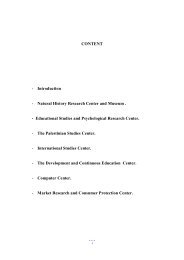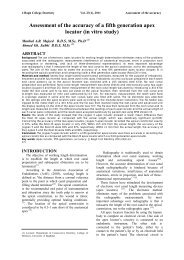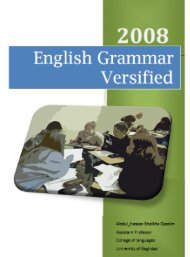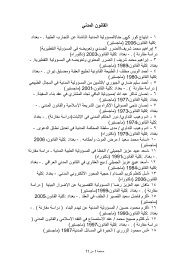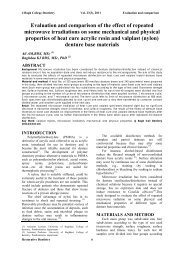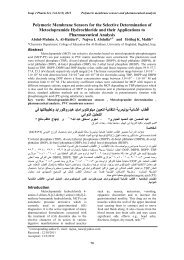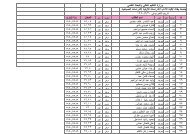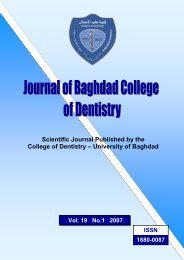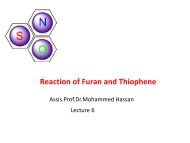Vol 21 No. 1
Vol 21 No. 1
Vol 21 No. 1
Create successful ePaper yourself
Turn your PDF publications into a flip-book with our unique Google optimized e-Paper software.
J Bagh College Dentistry <strong>Vol</strong>. <strong>21</strong>(1), 2009 Prevalence of dentine….<br />
1- Prevalence of hypersensitive teeth in this<br />
Iraqi sample is 15%<br />
2- Hypersensitivity occur most frequently in<br />
the age range of 25-36 years<br />
3- The most affected intraoral areas on the<br />
vestibular surfaces of teeth<br />
4- Most frequently affected teeth are 1 st<br />
premolars<br />
5- There is a definitely a site correlation<br />
factors which are the cervical abrasion and<br />
root exposure that is enhanced by improper<br />
oral hygiene procedures<br />
<strong>No</strong>. of Hypersen. teeth<br />
18<br />
16<br />
14<br />
12<br />
10<br />
8<br />
6<br />
4<br />
2<br />
0<br />
16-25 26-35 36-45 > 46<br />
Age group<br />
Men<br />
Woman<br />
Figure 1: Bar chart showing distribution of hypersensitive teeth according to age and gender<br />
<strong>No</strong>. of Hypersen. teeth<br />
90<br />
80<br />
70<br />
60<br />
50<br />
40<br />
30<br />
20<br />
10<br />
0<br />
Incisors Canines Premolars Molars<br />
Tooth type<br />
Maxillary<br />
Mandibular<br />
Figure 2: Bar chart showing distribution of hypersensitive teeth within the dentition<br />
Figure 3: Bar chart showing distribution of cervical abrasion defects within the dentition<br />
Oral and Maxillofacial Surgery and Periodontology 82



